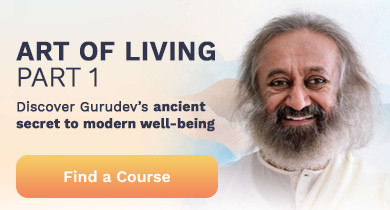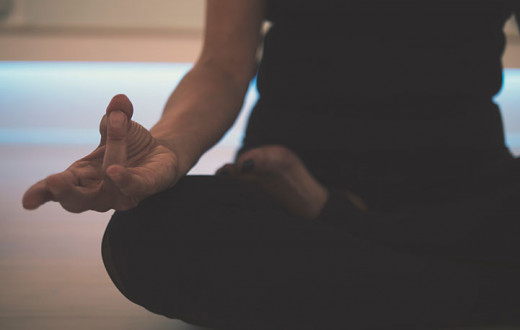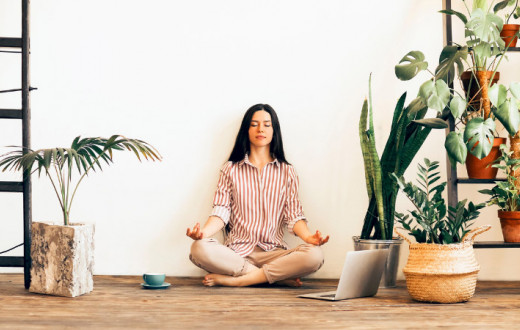Posted: June 13, 2018
Whether you are a seasoned meditator or are new to the practice, you have no doubt experienced the frustration of sitting down to meditate, only to be bombarded by a tsunami of thoughts. If you are a veteran meditator, you may notice how certain conditions lead to a higher quality of meditation, such as meditating early in the morning, practicing yoga, and eating healthy foods. While learning to meditate is no doubt the first step in gaining inner peace and mental quiet, certain habits and practices can allow you to go deeper into meditation. Try out the following tips and witness the added depth in your practice:
1. Offer a helping hand
When we help others, we tend to experience increased feelings of happiness and satisfaction. Scientific studies on altruism have found what researchers call a “helping high,” which is a euphoric feeling that occurs as a result of being of service to others. This natural high results from a triggering of the brain’s reward center, the center that sends out those feel-good dopamine neurotransmitters. The feelings of euphoria that come as a result of helping others are then present with us when we enter meditation, resulting in a deeper, more profound state of transcendence (samadhi).
Did you know? Seva is a Sanskrit word meaning “selfless service” and describes work done without expectation of reward. Seva in itself is an expression of yoga in daily life. While seva is most often associated with ashram work, seva can be applied to every waking moment of life, as it simply means acting compassionately with the intention of assisting and uplifting others.
If you are not having good experiences in meditation, it is recommended that you undertake seva, as it brings positive vibrations to you and brings you deeper into meditation.
2. Experience the sound of silence
Meditating in the quietest possible location is one of the most obvious and important ways to foster a deeper meditative experience. When in silence, the mind is able to settle down quickly, as there are fewer thoughts triggered by outside stimuli.
When in a noisy environment, the senses are occupied with collecting and interpreting information, which causes the body and mind to remain active and engaged rather than restful.
Silence naturally supports meditation, as it gives an opportunity for the senses to disengage and thus the body and mind to relax. And when the body and mind relax, meditation comes effortlessly.
However, total silence isn’t necessary for good meditation; during meditation the attention is naturally drawn inward, away from external noises, to the soothing inner silence within each person.
Pro tip: Do you ever wish you could take time away from daily responsibilities to go inward and experience true silence? For a profoundly deep experience of rest (along with delicious, freshly prepared vegetarian food and time in nature!) you can register for the advanced Art of Silence Course.
3. Practice yoga
Forget the mind - have you ever experienced restlessness in your body when sitting down to meditate? You sit down and suddenly feel the need to adjust your arms, change your leg position, and scratch your knees. After ten minutes, your meditation has consisted of moving your hips back and forth to find the perfect position.
When the body has not had the opportunity to move and be active, especially after long days of sitting at work, aches and stiffness result, leading to feelings of restlessness. For a deep meditation, practice yoga asanas, if only for five minutes before meditating. Doing so releases stiffness in the body and any accompanied restlessness. The mind is then able to move past the level of the body and dive deeper.
4. Watch what you eat
You may have noticed a difference between meditations done after eating oily, fried, non-vegetarian food, like deep-dish sausage pizza, and meditations done after eating light, fresh, healthy food, such as soup and salad. Food has a direct impact on our state of mind; just as eating a Philly cheese steak before going for a run results in feelings of heaviness and discomfort, so does eating heavy food before meditating result in an unpleasant experience.
For meditators, an ideal diet includes grains, green vegetables, fresh fruit, salads, soups, etc. – essentially foods that are light and easy to digest.
Pro tip: Do you want to make the transition to vegetarianism but feel unsure of where to start? Take the Art of Living 31-day Vegetarian Meditation Challenge!
5. Book your daily meditation time
By scheduling your meditations at consistent times every day, the body and mind become accustomed to settling down on the clock, making it easier to reach a deep state of meditation.
Inspired by Gurudev Sri Sri Ravi Shankar's wisdom talks
Based on inputs by Priyadarshini Hariram, a Sahaj Samadhi Meditation Teacher





























